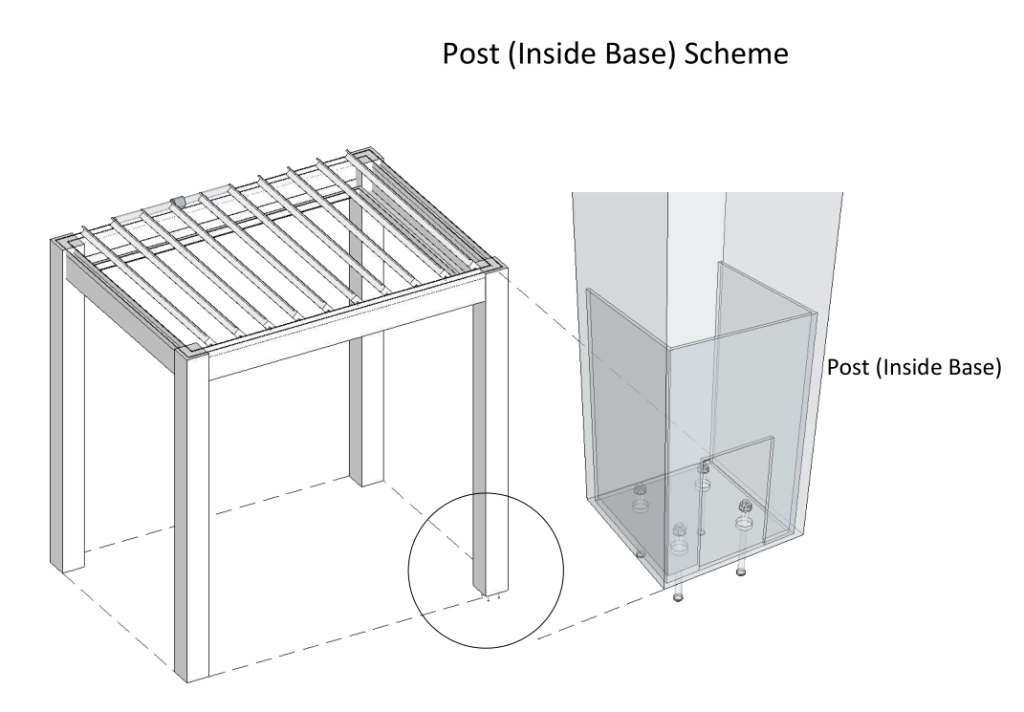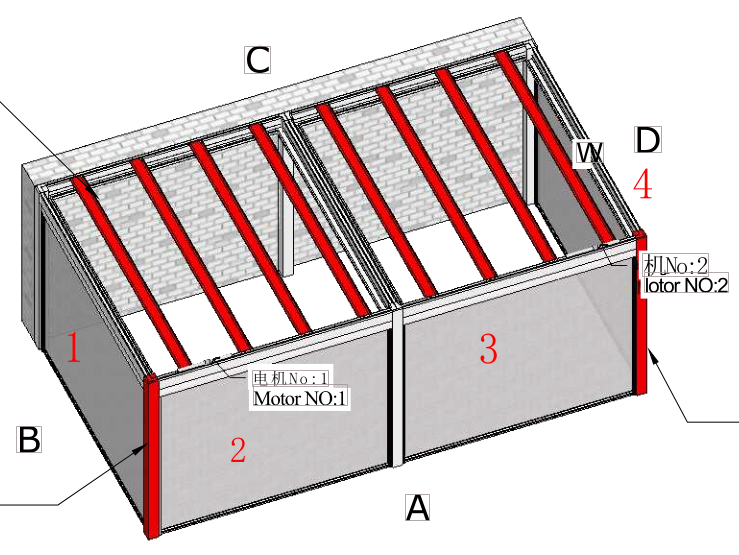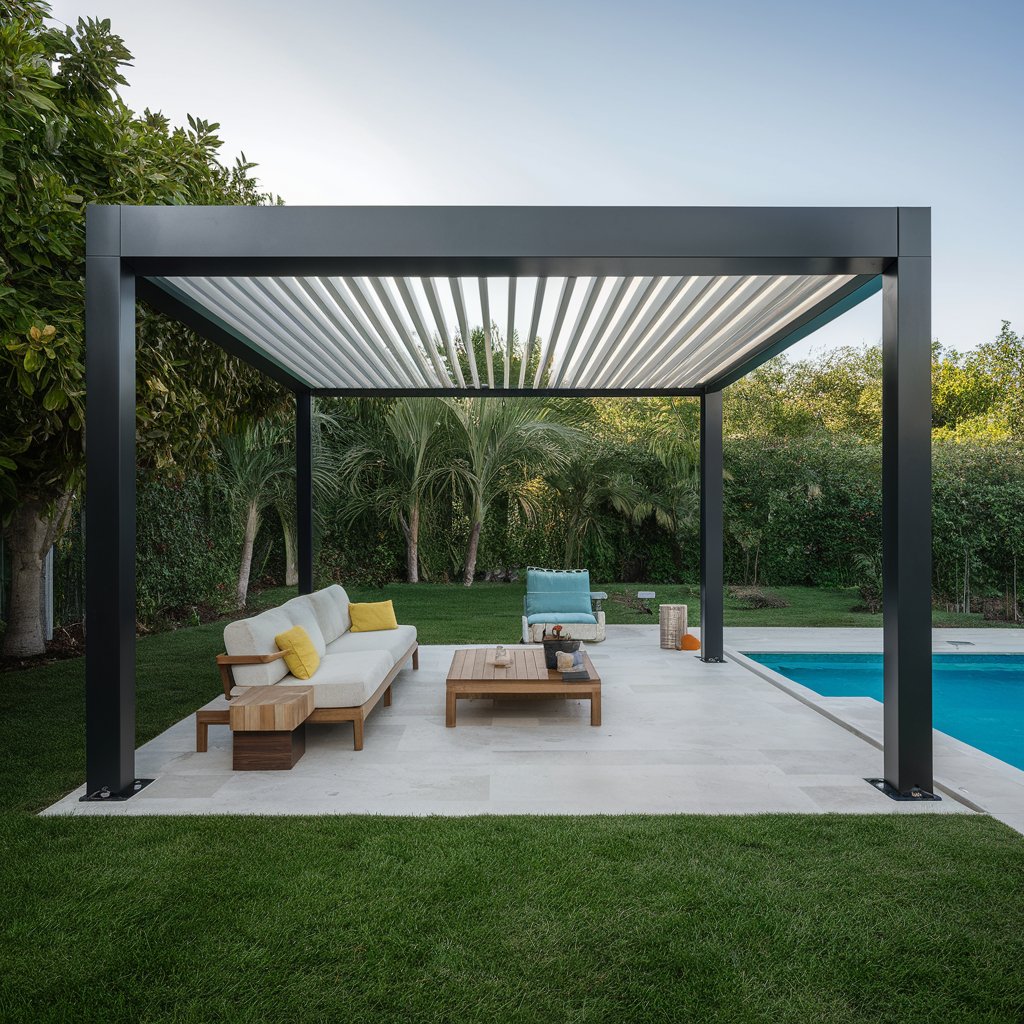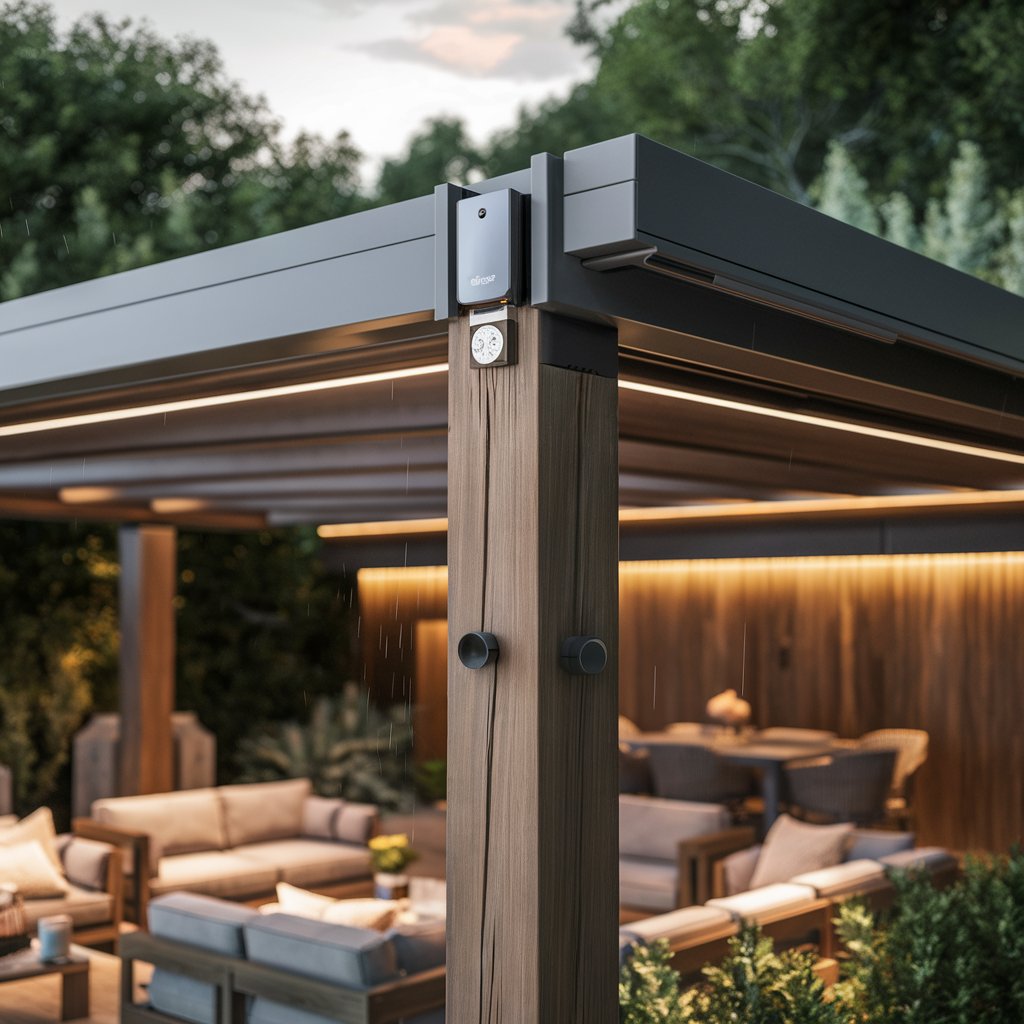Pergolas are cherished for their aesthetic appeal and practical benefits, transforming outdoor spaces into elegant retreats that combine beauty and function. These structures, characterized by open frameworks supported by columns and topped with beams and rafters, offer a delightful mix of shade and sunlight, making them ideal for gardens, patios, and backyards. However, for homeowners in regions susceptible to high winds, the durability of pergolas is a pressing concern. This article delves into whether pergolas can withstand high winds, examining factors like design, materials, and installation, while providing detailed strategies to enhance their wind resistance.
The Structure and Design of Pergolas
A pergola’s ability to endure high winds starts with its basic structure. Unlike solid structures such as gazebos, pergolas have an open framework that allows wind to pass through more easily, thereby reducing wind resistance. However, the stability of a pergola in high winds is contingent on several key design and structural considerations:
- Material Selection:
- Wood: Wooden pergolas are traditionally crafted from materials such as cedar, redwood, and pressure-treated pine. Cedar and redwood are naturally resistant to rot and insects, while pressure-treated pine is chemically treated to resist decay. However, wood requires regular maintenance, including sealing and staining, to maintain its integrity and aesthetic appeal. Wooden pergolas must be carefully inspected for signs of rot, warping, and insect damage, which can weaken the structure and make it more vulnerable to wind.
- Metal: Metal pergolas, made from aluminum or steel, offer superior strength and durability. Aluminum is lightweight and resistant to rust, making it a low-maintenance option that can endure harsh weather conditions. Steel pergolas, while heavier, provide exceptional stability in high winds due to their weight and strength. However, steel must be treated to prevent rust and corrosion.
- Vinyl: Vinyl pergolas are favored for their low maintenance requirements and resistance to rot and insects. However, they may not offer the same level of strength and durability as wood or metal. Vinyl can become brittle over time, especially in extreme weather conditions, and may require additional support to withstand high winds.
- Design Considerations:
- Anchoring: The stability of a windproof pergola in high winds depends largely on how well it is anchored. Proper anchoring to a stable foundation, such as concrete footings or deck mounts, is crucial. This prevents the pergola from tipping or shifting during strong winds. Anchoring kits and heavy-duty brackets are available to enhance the stability of windproof pergolas on various surfaces.
- Bracing: Adding diagonal bracing or corner brackets significantly enhances the structural stability of a pergola. These reinforcements help distribute wind forces more evenly across the structure, reducing the risk of collapse. Bracing can be incorporated into the initial design or added later as a retrofit.
- Roof Design: The design of the pergola’s roof plays a vital role in its wind resistance. The open lattice design allows wind to pass through, minimizing wind load. For windproof pergolas with a solid or covered roof, using flexible materials like polycarbonate panels can help absorb wind pressure. Retractable canopies are another option, allowing homeowners to remove or retract the cover during extreme weather, thus reducing wind resistance.
- Installation Quality:
- Proper installation is paramount to ensuring a pergola’s ability to withstand high winds. Professional installation guarantees that all components are securely fastened and the structure is properly anchored. Experienced installers can also identify potential weak points and recommend additional reinforcements if necessary. Homeowners opting for DIY installation should follow manufacturer guidelines meticulously and consider consulting with professionals for complex projects.

Enhancing Pergola Durability Against High Winds
To further enhance the wind resistance of pergolas, homeowners can take several proactive measures. These strategies not only improve the structural integrity of the pergola but also extend its lifespan and maintain its aesthetic appeal.
- Regular Inspections and Maintenance:
- Regular inspections are crucial for identifying and addressing potential issues before they compromise the structure. Homeowners should check for loose bolts, cracked or split wood, rust on metal components, and other signs of wear and tear. Performing maintenance tasks, such as tightening bolts, replacing damaged components, and applying protective coatings, can prevent minor issues from escalating into major problems.
- 2.Additional Reinforcements:
- Reinforcing the pergola with additional support beams, cross braces, and corner brackets can significantly enhance its wind resistance. These reinforcements help distribute wind loads more evenly and provide extra stability. For existing pergolas, retrofitting with additional supports can be an effective way to improve durability without completely rebuilding the structure.

3.Windbreaks and Landscaping:
- Creating windbreaks around the pergola can reduce wind speed and protect the structure. Planting trees, shrubs, and hedges strategically can act as natural windbreaks, absorbing and deflecting wind. Fences and screens can also serve as effective windbreaks, particularly in more exposed areas. These windbreaks not only protect the pergola but also create a more comfortable and sheltered outdoor environment.
4.Removable Canopies and Covers:
- For pergolas with canopies or covers, opting for removable or retractable designs can be highly beneficial. During periods of high winds, removing the canopy or retracting the cover can reduce wind load and prevent damage. This flexibility allows homeowners to enjoy the benefits of a covered pergola while minimizing risk during extreme weather conditions.
5.Professional Consultation:
- Consulting with structural engineers or professional builders can provide valuable insights into enhancing a pergola’s wind resistance. These experts can assess the specific site conditions, recommend appropriate materials and designs, and suggest reinforcements tailored to the local climate. Professional consultation is particularly valuable for large or custom-designed windproof pergolas, where standard guidelines may not be sufficient.
Case Studies: Pergolas in Wind-Prone Regions
Examining case studies of pergolas in wind-prone regions provides practical insights into how these structures can be designed and maintained to withstand high winds. These examples highlight successful strategies and common challenges faced by homeowners.
- Coastal Areas:
- In coastal regions, pergolas are exposed to strong and consistent winds, often accompanied by salt spray and high humidity. A case study from the Atlantic coast showcases a wooden pergola reinforced with stainless steel brackets and bolts to prevent corrosion. The pergola was anchored to concrete footings with heavy-duty brackets, and additional diagonal bracing was added to enhance stability. Regular maintenance, including sealing and staining, helped protect the wood from moisture and salt damage. The pergola successfully withstood several storm seasons with minimal damage.
- Mountainous Regions:
- In mountainous areas, pergolas face unique challenges due to high wind speeds and variable weather conditions. A case study from the Rocky Mountains features a steel pergola designed with a low-profile roof to minimize wind resistance. The structure was anchored to a reinforced concrete patio with heavy-duty anchors and brackets. Cross bracing was incorporated into the design to distribute wind loads. The homeowner added a retractable canopy that could be removed during high winds. This design not only provided durability but also allowed for year-round use of the outdoor space.
- Plains and Open Fields:
- Pergolas in open fields or plains are particularly vulnerable to high winds due to the lack of natural windbreaks. A case study from the Great Plains highlights a vinyl pergola installed on a reinforced deck with substantial anchoring. The homeowner planted a row of evergreen trees on the windward side of the pergola to serve as a natural windbreak. Additional support beams and corner brackets were added to enhance stability. The pergola’s roof was designed with an open lattice pattern to allow wind to pass through. This combination of design, anchoring, and landscaping proved effective in maintaining the pergola’s integrity during high winds.
Advances in Pergola Technology
Recent advancements in pergola technology and materials have further improved their ability to withstand high winds. Innovations in design, materials, and engineering have expanded the possibilities for creating durable and resilient pergolas.
- Composite Materials:
- Composite materials, made from a blend of wood fibers and plastic, offer the aesthetic appeal of wood with enhanced durability and low maintenance requirements. These materials are resistant to rot, insects, and weathering, making them ideal for high-wind areas. Composite pergolas can be designed with reinforced cores and additional support features to improve stability.
- Modular Designs:
- Modular windproof pergola designs allow for easy customization and adaptation to specific site conditions. These designs feature pre-engineered components that can be assembled with precision, ensuring a secure fit and enhanced stability. Modular pergolas can be easily reinforced with additional supports and bracing as needed.
- Smart Pergolas:
- Smart pergolas incorporate advanced technology, such as motorized retractable canopies, weather sensors, and automated controls. These features allow homeowners to quickly respond to changing weather conditions, retracting the canopy or adjusting the structure to reduce wind resistance. Smart pergolas also offer the convenience of remote operation and integration with home automation systems.
- Engineering Software:
- Advances in engineering software and simulation tools enable precise analysis of wind loads and structural performance. Engineers can model different design scenarios, assess potential weak points, and optimize the pergola’s design for maximum wind resistance. These tools provide valuable insights during the planning and design phases, ensuring that the final structure is both durable and aesthetically pleasing.
Practical Tips for Homeowners
For homeowners considering the installation of a windproof pergola in high-wind areas, the following practical tips can help ensure a successful and durable project:
- Assess Local Conditions:
- Understanding the local climate and wind patterns is essential for designing a wind-resistant pergola. Homeowners should consider factors such as prevailing wind directions, average wind speeds, and the frequency of extreme weather events.
- Choose the Right Materials:
- Selecting materials that offer both durability and low maintenance is crucial. Metal and composite materials are excellent choices for high-wind areas due to their strength and resistance to weathering.
- Prioritize Anchoring and Bracing:
- Proper anchoring and bracing are fundamental to a pergola’s stability. Homeowners should invest in high-quality anchoring systems and consider additional bracing to enhance structural integrity.
- Incorporate Flexibility:
- Flexible design elements, such as retractable canopies and modular components, allow homeowners to adapt the pergola to changing weather conditions. These features can significantly reduce wind load and prevent damage during extreme winds.
- Consult with Professionals:
- Engaging with structural engineers, professional builders, and local experts can provide valuable guidance and ensure that the pergola is designed and installed to withstand high winds. Professional consultation is especially important for custom or large-scale projects.
- Regular Maintenance:
- Ongoing maintenance is essential to preserving the pergola’s structural integrity. Homeowners should schedule regular inspections, address any issues promptly, and perform necessary maintenance tasks to keep the pergola in top condition.
Conclusion
Pergolas can withstand high winds when designed, constructed, and maintained with attention to detail and an understanding of local conditions. By choosing the right materials, ensuring proper anchoring and bracing, and incorporating flexible design elements, homeowners can enjoy the beauty and functionality of pergolas even in wind-prone areas. Regular inspections and maintenance, combined with professional guidance, further enhance the durability and longevity of these structures. As advancements in technology and materials continue to evolve, the potential for creating resilient and wind-resistant pergolas will only increase, offering homeowners even more opportunities to enhance their outdoor living spaces.



Very interesting information!Perfect just what I was looking for!Raise your business